Fiches poissons d'eau douce (page 23)
Page 23 des 1910 espèces de poissons d'eau douce avec 60 fiches. Il y a 24 genres différents de Neolebias à Otocinclus.
Liste des fiches de Neolebias ansorgii à Otocinclus vittatus
- Neolebias ansorgii
 Néon du Gabon
Néon du Gabon
2,2 → 3,2 cm (> 50 L)
pH 5,0–6,0 | GH 1–8 | 24–29°C - Neolebias powelli

1,4 → 1,8 cm (> 20 L)
pH 6,5–8,0 | GH 5–20 | 23–26°C - Neolebias trewavasae
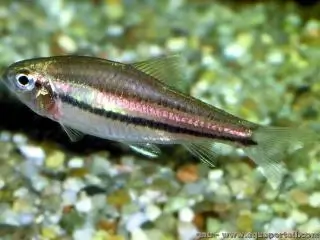
3,5 → 5,3 cm (> 80 L)
pH 6,0–7,0 | GH 3–10 | 24–28°C - Neolebias trilineatus
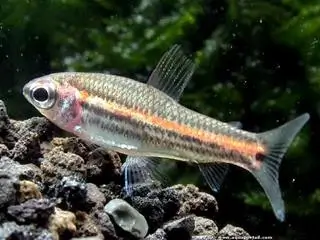 Néon africain à trois lignes
Néon africain à trois lignes
3,0 → 3,5 cm (> 50 L)
pH 6,0–7,5 | GH 3–10 | 23–26°C - Neolebias unifasciatus
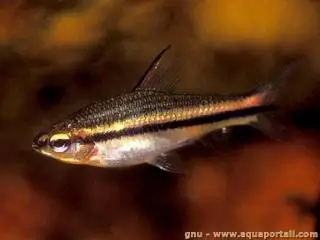 Néon africain à une ligne
Néon africain à une ligne
4,0 → 4,2 cm (> 80 L)
pH 6,0–7,0 | GH 1–8 | 24–28°C - Neostethus lankesteri
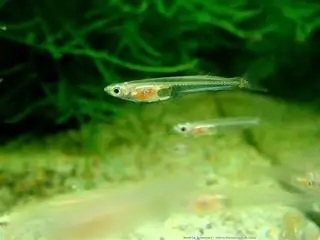
2,3 → 3,0 cm (> 50 L)
pH 7,0–8,0 | GH 10–30 | 23–28°C
- Neovespicula depressifrons
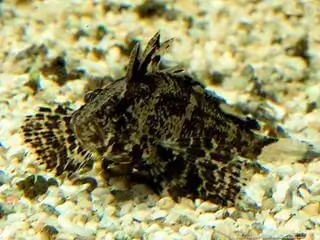
8,0 → 10,0 cm (> 200 L)
pH 7,0–8,5 | GH 20–30 | 22–28°C - Nimbochromis fuscotaeniatus
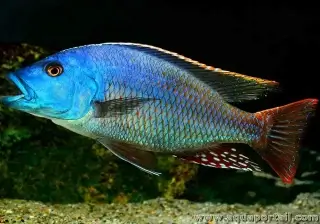
20,0 → 25,0 cm (> 800 L)
pH 7,5–8,5 | GH 10–20 | 24–27°C - Nimbochromis linni
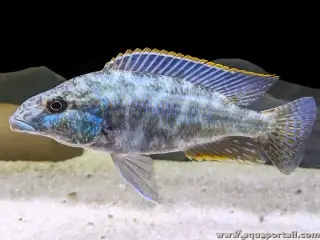
20,0 → 25,0 cm (> 800 L)
pH 7,5–8,5 | GH 10–20 | 23–27°C - Nimbochromis livingstonii
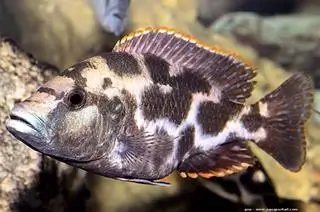
20,0 → 25,0 cm (> 450 L)
pH 7,5–8,5 | GH 10–25 | 25–28°C - Nimbochromis polystigma
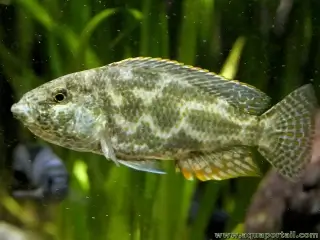
18,0 → 23,0 cm (> 800 L)
pH 7,5–8,5 | GH 10–20 | 23–26°C - Nimbochromis venustus
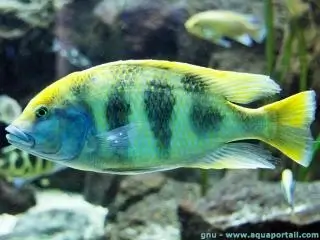 Haplo-Léopard
Haplo-Léopard
22,0 → 25,0 cm (> 450 L)
pH 7,5–8,5 | GH 10–25 | 25–27°C - Nomorhamphus celebensis
 Demi-bec du lac Poso
Demi-bec du lac Poso
6,0 → 8,0 cm (> 120 L)
pH 6,0–6,5 | GH 3–5 | 22–25°C - Nomorhamphus ebrardtii
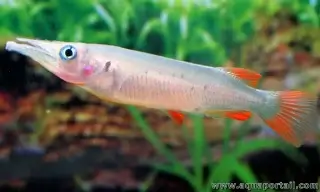
7,0 → 9,0 cm (> 120 L)
pH 6,5–7,5 | GH 3–15 | 24–26°C - Nomorhamphus liemi
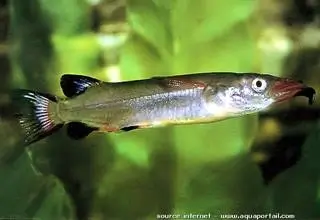 Demi-bec des Célèbes
Demi-bec des Célèbes
9,0 → 14,0 cm (> 120 L)
pH 6,5–7,5 | GH 3–15 | 20–26°C - Nosferatu molango

10,0 → 15,0 cm (> 200 L)
pH 6,5–8,0 | GH 8–25 | 16–27°C - Nosferatu pame
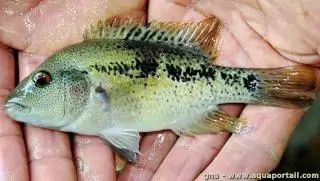
10,0 → 13,0 cm (> 200 L)
pH 7,5–8,5 | GH 15–30 | 23–27°C - Nosferatu pratinus
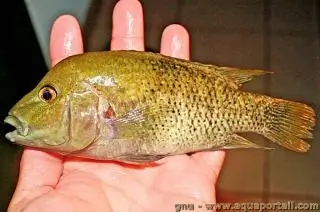
10,0 → 13,0 cm (> 200 L)
pH 6,5–7,5 | GH 5–12 | 23–27°C - Nothobranchius eggersi
 Killi rouge de Egger
Killi rouge de Egger
4,5 → 5,0 cm (> 50 L)
pH 5,5–6,5 | GH 1–5 | 23–28°C - Nothobranchius makondorum

5,4 → 6,3 cm (> 50 L)
pH 6,0–7,0 | GH 1–8 | 24–28°C - Nothobranchius rachovii

4,5 → 6,0 cm (> 50 L)
pH 6,0–7,0 | GH 1–8 | 20–26°C - Notropis chlorocephalus
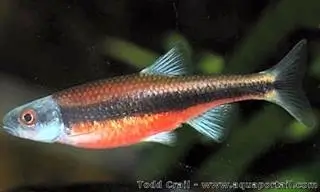
6,5 → 7,5 cm (> 120 L)
pH 6,0–7,5 | GH 3–12 | 15–22°C - Notropis chrosomus
 Cyprin arc-en-ciel
Cyprin arc-en-ciel
5,5 → 8,1 cm (> 120 L)
pH 6,5–7,5 | GH 5–20 | 18–26°C - Noturus flavipinnis
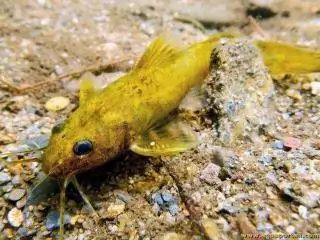 Poisson-chat fou à nageoires jaunes
Poisson-chat fou à nageoires jaunes
7,5 → 11,5 cm (> 120 L)
pH 6,5–7,5 | GH 3–8 | 0–0°C
- Noturus flavus
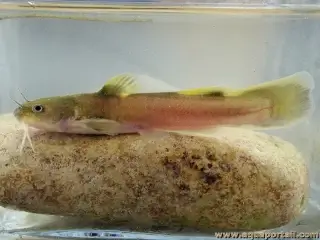 Barbotte des rapides
Barbotte des rapides
13,0 → 31,0 cm (> 300 L)
pH 6,0–8,0 | GH | 5–23°C - Odontocharacidium aphanes
 Tétra vert nain
Tétra vert nain
1,5 → 1,7 cm (> 20 L)
pH 5,5–7,0 | GH 1–8 | 24–28°C - Oligolepis acutipennis
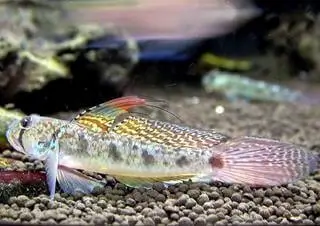
9,0 → 12,0 cm (> 120 L)
pH 7,0–8,0 | GH 8–30 | 22–28°C - Oliotius oligolepis
 Barbus à carreaux
Barbus à carreaux
4,0 → 5,0 cm (> 80 L)
pH 5,5–6,5 | GH 1–8 | 20–24°C - Olyra longicaudata
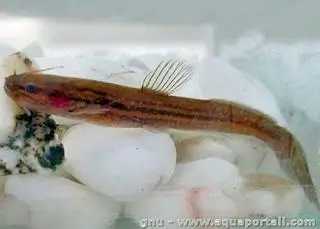
8,0 → 11,0 cm (> 120 L)
pH 6,0–7,0 | GH 3–10 | 16–22°C - Ompok bimaculatus
 Poisson-chat beurre
Poisson-chat beurre
30,0 → 45,0 cm (> 1500 L)
pH 6,0–8,0 | GH 3–15 | 20–26°C - Ompok karunkodu

18,0 → 23,0 cm (> 450 L)
pH 6,5–7,5 | GH 3–12 | 23–27°C - Ompok pabda

17,0 → 25,0 cm (> 800 L)
pH 6,0–8,0 | GH 3–15 | 20–26°C - Oncorhynchus mykiss
 Truite arc-en-ciel
Truite arc-en-ciel
50,0 → 120,0 cm (> 6000 L)
pH 6,0–8,5 | GH 5–30 | 10–24°C - Oncorhynchus tshawytscha
 Saumon royal
Saumon royal
60,0 → 150,0 cm (> 6000 L)
pH 6,0–8,5 | GH 8–30 | 10–27°C - Opsodoras stuebelii

10,0 → 15,0 cm (> 200 L)
pH 5,0–7,5 | GH 3–20 | 18–27°C - Oreichthys cosuatis
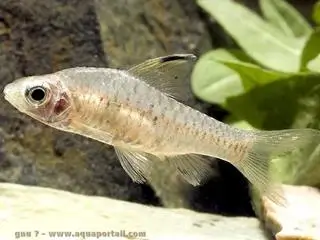 Poisson d'or
Poisson d'or
4,0 → 4,5 cm (> 120 L)
pH 6,5–7,5 | GH 3–15 | 22–25°C - Oreichthys crenuchoides
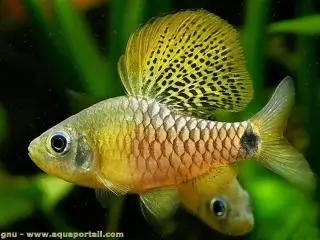
2,5 → 3,5 cm (> 50 L)
pH 6,0–7,5 | GH 3–12 | 22–26°C - Oreichthys parvus
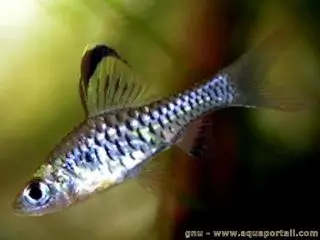
2,5 → 3,5 cm (> 80 L)
pH 6,0–7,5 | GH 3–12 | 22–26°C - Oreochromis mossambicus
 Tilapia du Mozambique
Tilapia du Mozambique
30,0 → 40,0 cm (> 1500 L)
pH 5,5–8,0 | GH 3–20 | 17–35°C - Oreochromis tanganicae
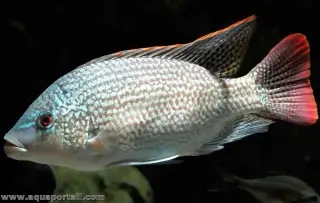 Tilapia du Tanganyika
Tilapia du Tanganyika
35,0 → 42,0 cm (> 1500 L)
pH 7,5–8,5 | GH 10–20 | 24–26°C - Oryzias latipes
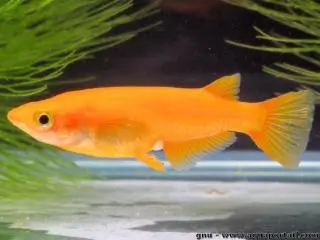 Médaka
Médaka
3,0 → 3,6 cm (> 50 L)
pH 6,5–8,5 | GH 8–30 | 16–22°C - Oryzias mekongensis
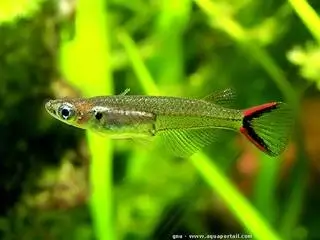
1,5 → 2,5 cm (> 50 L)
pH 6,0–7,5 | GH 3–8 | 23–27°C - Osphronemus goramy
 Gourami géant
Gourami géant
45,0 → 70,0 cm (> 1500 L)
pH 6,5–8,0 | GH 5–25 | 18–31°C - Osphronemus laticlavius

35,0 → 50,0 cm (> 1500 L)
pH 5,0–8,0 | GH 3–30 | 22–29°C - Ossancora punctata

10,0 → 11,0 cm (> 120 L)
pH 5,5–7,5 | GH 3–15 | 22–27°C - Osteogaster eques
 Corydoras cavalier
Corydoras cavalier
4,8 → 5,5 cm (> 80 L)
pH 5,5–7,5 | GH 1–15 | 22–27°C - Osteogaster hephaestus
 Corydoras d'Héphaïstos, Corydoras boule de feu
Corydoras d'Héphaïstos, Corydoras boule de feu
1,9 → 3,5 cm (> 50 L)
pH 5,5–7,5 | GH 1–10 | 22–28°C - Osteogaster maclurei
 CW016
CW016
3,5 → 4,8 cm (> 120 L)
pH 5,5–7,0 | GH 3–8 | 19–25°C - Osteogaster melanotaenia
 Corydoras vert-doré
Corydoras vert-doré
5,0 → 5,8 cm (> 80 L)
pH 6,0–7,5 | GH 5–20 | 22–26°C - Osteogaster rabauti
 Corydoras rouille
Corydoras rouille
4,5 → 5,5 cm (> 80 L)
pH 5,5–7,0 | GH 1–12 | 23–25°C - Osteogaster zygata
 Corydoras à barre noire
Corydoras à barre noire
5,0 → 6,0 cm (> 80 L)
pH 6,0–7,5 | GH 2–25 | 16–25°C - Osteoglossum bicirrhosum
 Arowana argenté
Arowana argenté
80,0 → 120,0 cm (> 6000 L)
pH 6,5–7,0 | GH 1–10 | 23–29°C - Osteoglossum ferreirai
 Arowana noir
Arowana noir
70,0 → 110,0 cm (> 6000 L)
pH 5,0–6,5 | GH 1–5 | 24–30°C - Otocinclus arnoldi

4,2 → 5,0 cm (> 120 L)
pH 5,5–7,0 | GH 3–10 | 16–25°C - Otocinclus cocama

3,8 → 4,4 cm (> 50 L)
pH 5,5–7,0 | GH 1–8 | 24–28°C - Otocinclus hoppei

3,0 → 3,5 cm (> 80 L)
pH 5,5–7,0 | GH 1–8 | 24–28°C - Otocinclus macrospilus

3,0 → 3,5 cm (> 80 L)
pH 5,5–7,5 | GH 1–10 | 21–26°C - Otocinclus mimulus

4,0 → 5,0 cm (> 120 L)
pH 6,0–7,5 | GH 1–5 | 17–24°C - Otocinclus vestitus

2,8 → 3,2 cm (> 50 L)
pH 6,0–7,0 | GH 3–10 | 22–26°C - Otocinclus vittatus
 Oto LDA023
Oto LDA023
3,3 → 4,2 cm (> 120 L)
pH 5,5–7,5 | GH 1–10 | 21–26°C
Les données biologiques des espèces indiquent la taille en cm et, si les valeurs sont pertinentes, d'autres caractéristiques spécifiques.
